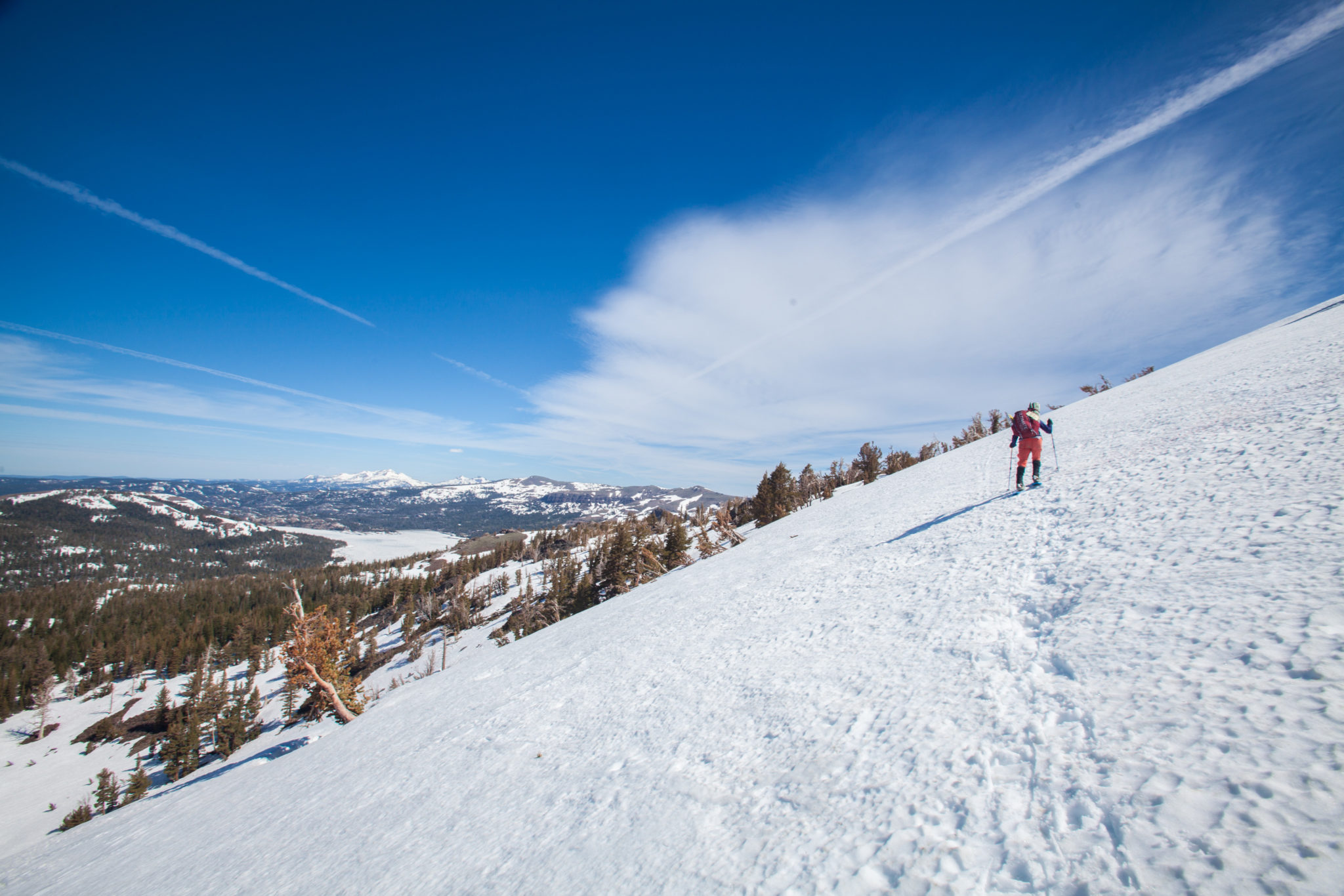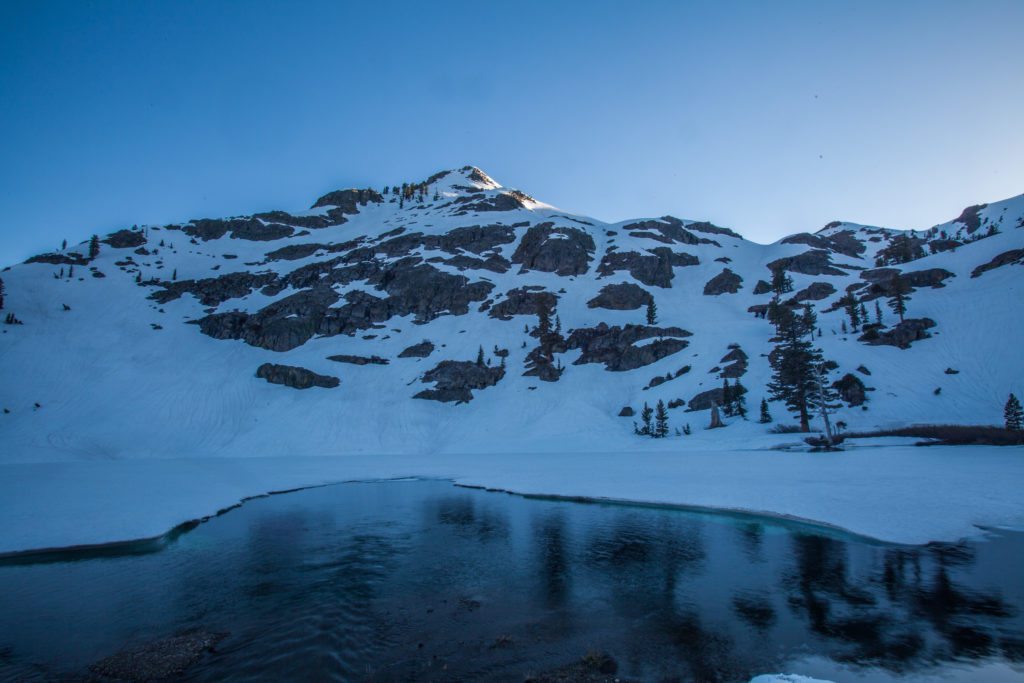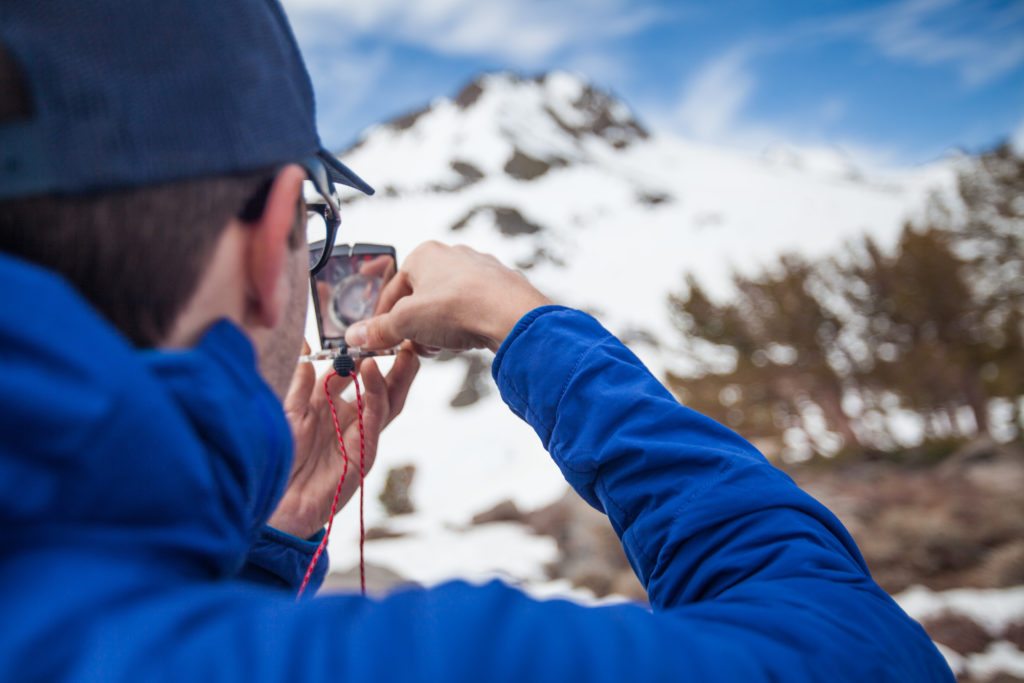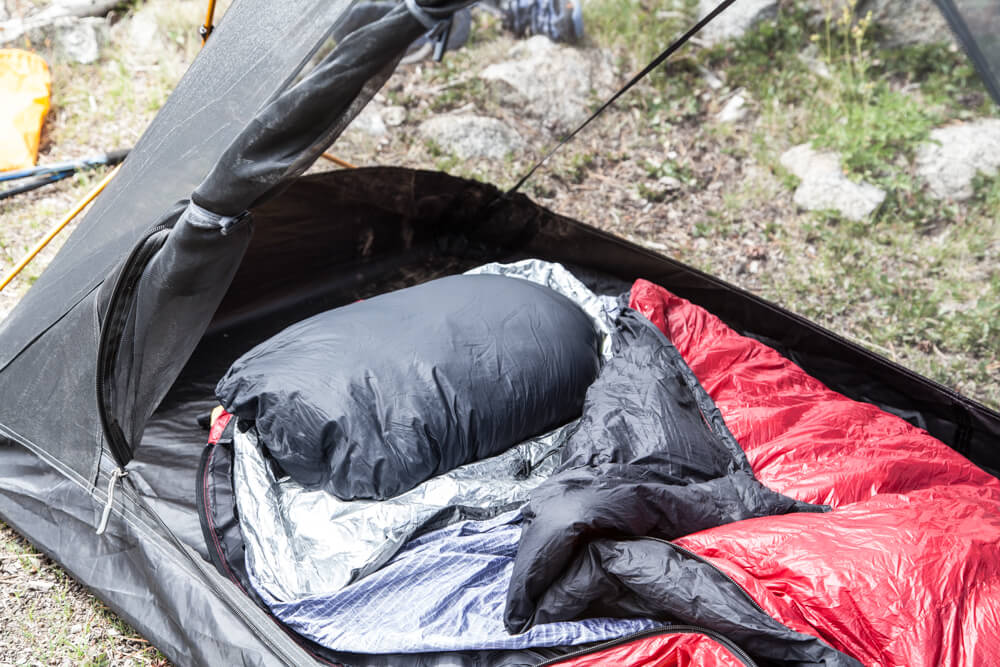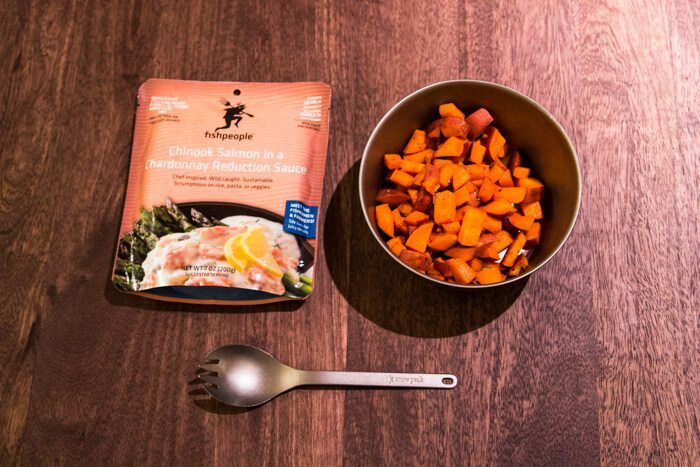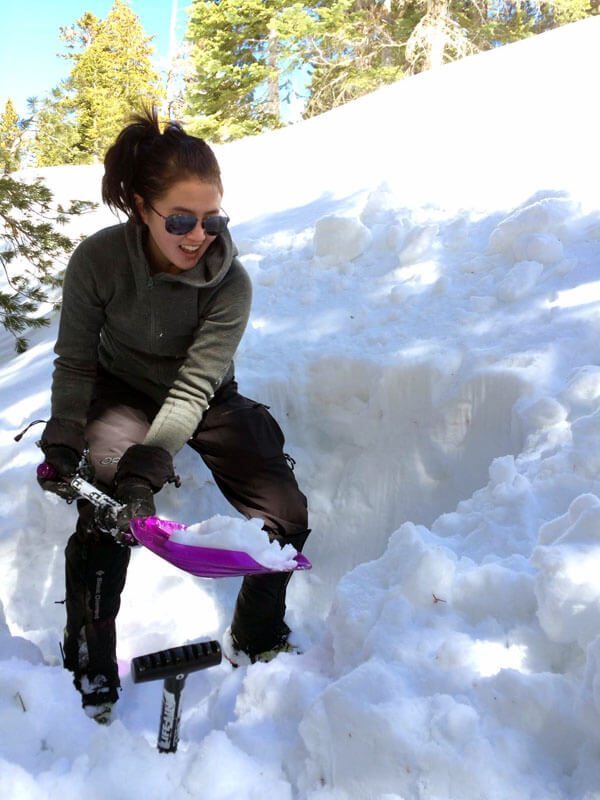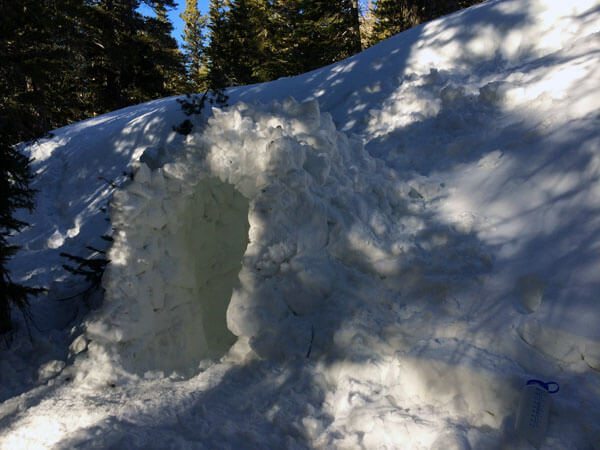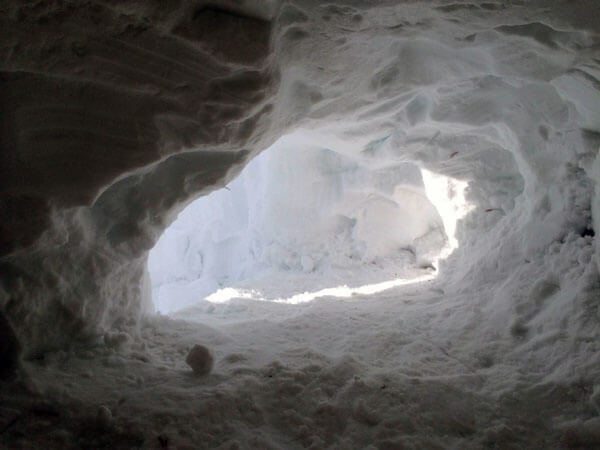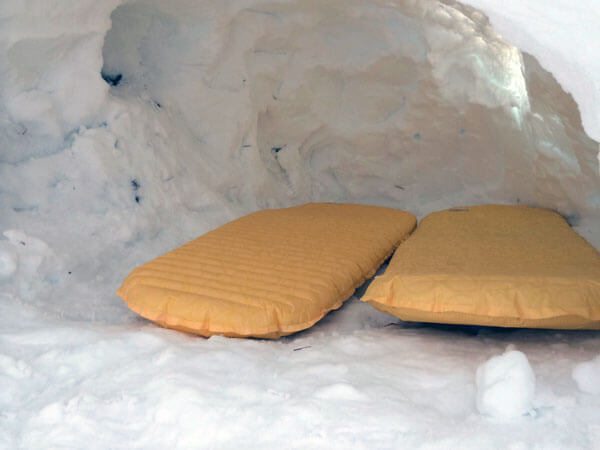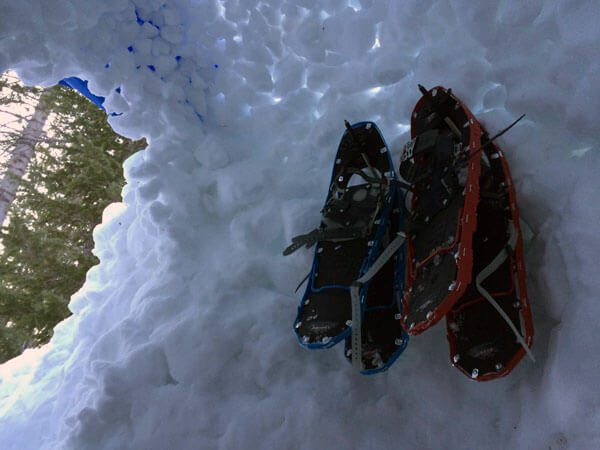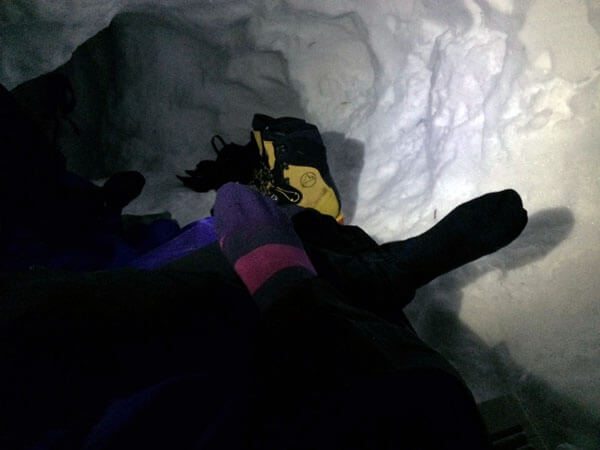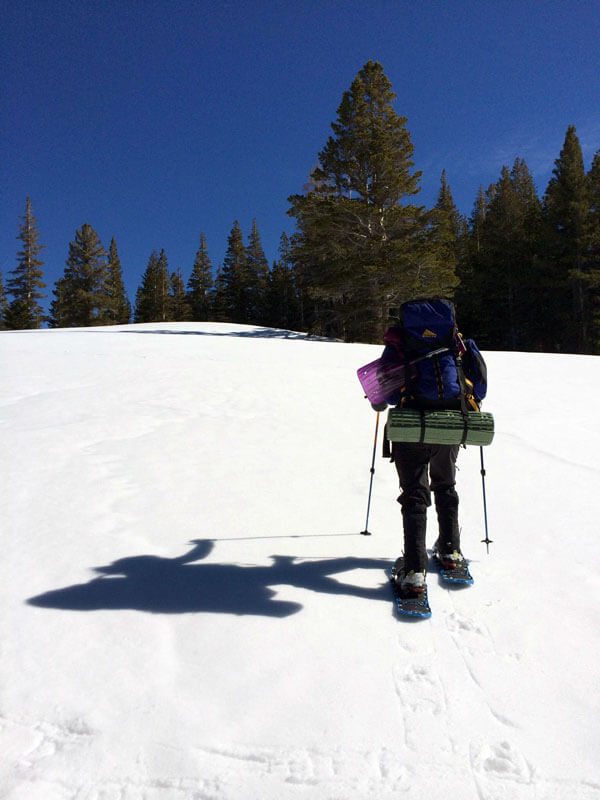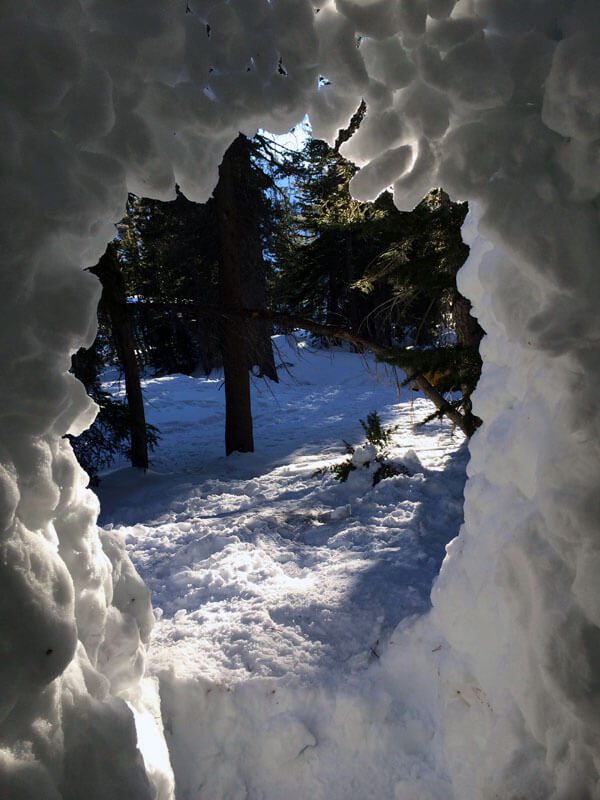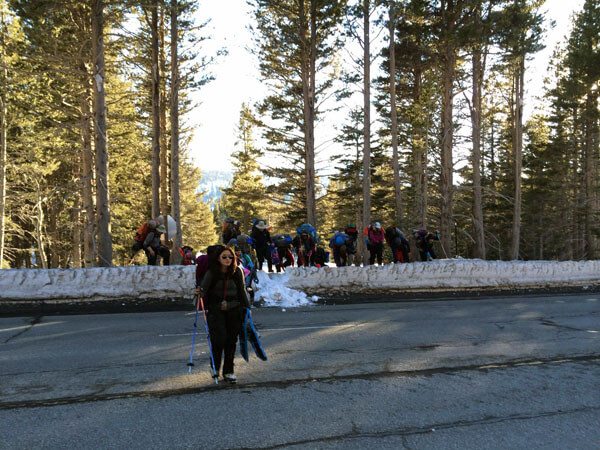This winter was a Sierra snow year for the books. I’ve lived in California all my life but don’t remember a winter where it rained for three months straight. All the snow meant my Sierra objectives were looking a little bleak and buried. I brushed up on my map and compass skills with REI and hit the trail in Mokelumne Wilderness at the beginning of June. My destination was a place I’ve never been: Fourth of July Lake in the Carson Pass Management Area.
snowcamping
Pillows… are they something you really need in the backcountry? I’ve found myself debating this question of the last few years. Yeah, I could stuff some clothes into a stuff sack and call it a night. But after a few lumpy, sleepless nights, I decided that a few extra ounces of weight wouldn’t hurt for ultimate comfort while backpacking. The Feathered Friends Geoduck pillow did the trick.
Backcountry meals don’t always have to be freeze dried meals in pouches. In fact, you can get high protein, gluten-free, sustainably caught, and locally grown and absolutely tasty meals where you don’t even have to add water. How? By eating Fishpeople Seafood.
With a mission of harvesting only sustainable seafood, Fishpeople Seafood helps support local communities and fisheries to ensure healthy fish populations for years to come. This detail and attention to the product ensures that you know exactly who caught your fish and where it came from. You can even track your food with the code on the back of your pouch. All ingredients are sourced locally and each product lists out the ingredients in painstaking detail.
The San Francisco chapter of the Sierra Club holds an introductory snowcamping course every year. Members and non-members go out in the backcountry to get some hands-on experience with seasoned snowcamping veterans.
The course was… an interesting experience. I’m not sure if I would do it again. It’s definitely a great learning experience if you’re looking to transition from three-season backpacking to backpacking and camping year-round. However, the course could be infinitely more organized.
The course is taught in groups of thirty people, with about a 50:50 ratio of instructors or assistant leaders to students. Students spend one day in the classroom and two trips in the backcountry. The classroom day is meant to give you a brief overview on what to expect, how to prepare, and what you need. Then you go out on two trips to practice your skills: map and compass, snow shelters, digging, etc.
The Sierra Club Snowcamping version of backpacking is incredibly different from what I’m used to. I’m all about traveling long distances, eating fast dinners, crawling into my bag when darkness falls, and sleeping until the sun rises. I consider backpacking a nice “reset button” when everything gets thrown out of whack and I need to slow down on life. Not on this trip. The group had a five course (yes, five) meal that began around 5pm that was supposed to last well into the night.
Though everyone was great, friendly, nice and knowledgeable, the amount of anecdotal information everyone had to share was overwhelming and time-consuming. All the assistant leaders had something to say about everything; everyone had an opinion on what was right and what wasn’t. Oftentimes, the more seasoned folks repeated stories over and over again. It lead to a lot of sitting around and listening.
All in all, the instruction and knowledge were great. I got a good refresher in map and compass and route-finding. And I built an igloo-snowcave hybrid with a gear closet. I’d say the latter alone was worth it all.
If you’re interested in taking this course, please visit the Sierra Snowcamping website here. The 2014 season is almost over, but you can start prepping for 2015!

